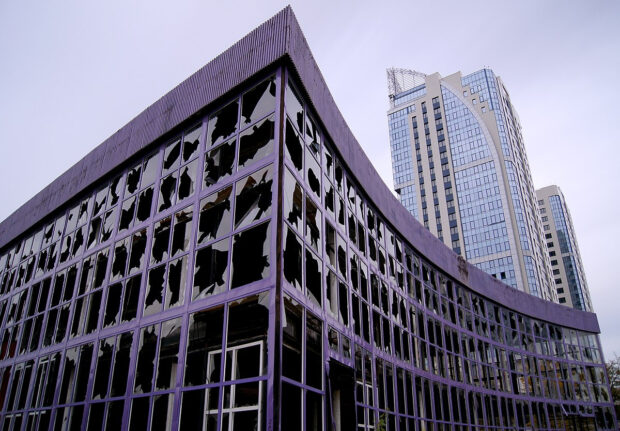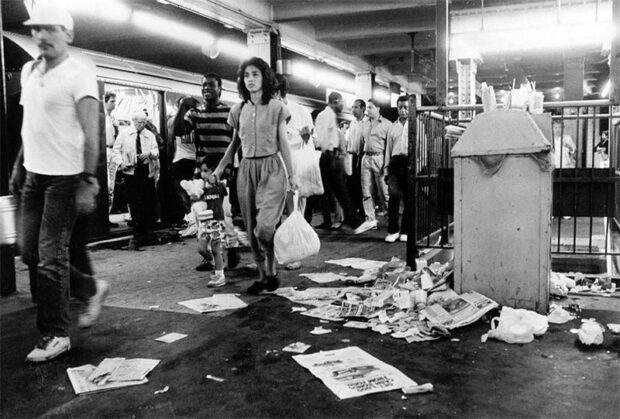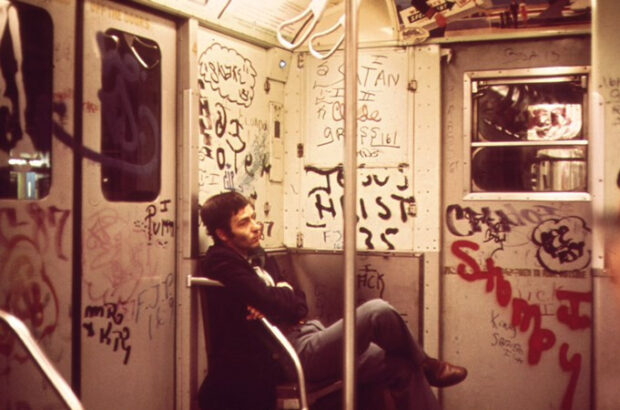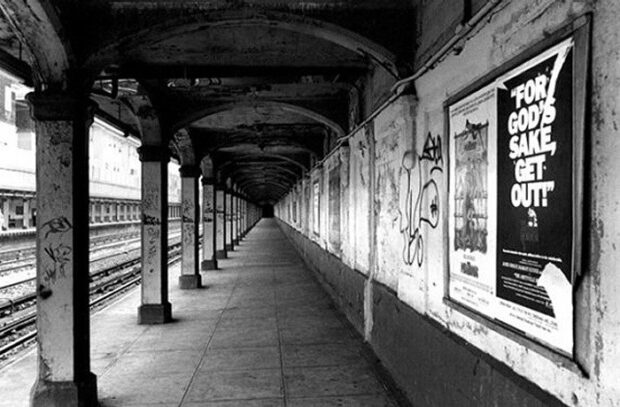
Crime in New York plummeted to its peak in 1990. The reason for the dramatic improvement of the situation was the application of the «broken window theory» on the urban scale.
In the 1980s, New York City was in the grip of the most violent crime epidemic in its history. More than 1,500 serious crimes were committed every day in the city, including 6-7 murders. Walking the streets at night was extremely dangerous, and driving in the subway was risky even during the day. In the subway, robbers and beggars were common. The damp platforms were barely lit, the cars were cold and dirty, and the walls and ceiling were all graffiti-painted.

There seemed to be no way out, but a theory came along, formulated by CSI Wilson and Kelling. They argued that crime was the result of a lack of order. If the window is broken and not glazed, passers-by decide that there is no order, no one is responsible for anything. Other windows will soon be broken and a sense of impunity will spread to the entire district. And it is close to serious crimes.
The Canadian sociologist Malcolm Gladwell, a specialist in social epidemics, also supports this theory. He believes that a person is breaking the law not so much because of bad heredity or bad upbringing, but because of the influence of his surroundings.
In the mid-1980s, the New York Metro changed management. The new director began his work from graffiti. At the end of the routes, there were washes. If the wagon came with graffiti on the walls, the drawings were washed off during the turn, if not in time, the wagon was taken out of service. Dirty and clean cars were not mixed.
READ: Atypical New York: Where Better Not Even Looking
In 1990, William Bratton was hired as Chief of Transport Police. His first act was for stowaways. At that time, 170,000 passengers were on the subway for free. Teenagers jumped through turnstiles or broke through. People saw it, and they looked for ways not to pay the fare. The problem grew like a snowball.

In order to fight with the ride stealers near turnstiles were placed, undercover policemen. They picked up the offenders, handcuffed them, and chained them up on the platform.
Stowaways stood in front of everyone until the «big catch» was finished. They were then escorted to the police bus where they were searched, fingerprinted, and checked against the database. A lot of people had guns and problems with the law.
READ: 15 Best Small Towns in New York
Rudolf Giuliani was elected Mayor of New York in 1994. He appointed Bratton as Chief of Police. The broken windows theory has a chance to be applied on a city-wide scale.
The police took a tough stance against minor offenses. Arrested were all those who drank and rioted in public places, who raked and peed in the street, painted the walls, and tried to pass without a ticket. And the epidemic was stopped. New York City became one of the safest mega-cities in America by the late 1990s.
The first experiment was carried out on the street, where there are many shops, by the wall of the house, where the good Groningen come to shop and park their bicycles. There was a bright, conspicuous sign at this wall that forbade painting on the walls. At first, the wall was clean. The experimenters hung a piece of paper on the steering wheel of each bicycle (the total number of bicycles was 77) with the words «Wish all happy holidays!» and the logo of a non-existent sporting goods store. Hiding in a secluded corner, researchers began to observe the activities of cyclists.

There were no urns on the street, so the person could either throw the paper on the ground, hang it on another bicycle, or take it with him to throw it away later. The first two options were considered to be violations of accepted norms, the third was compliance with them.
Of the 77 cyclists, only 25 (33%) were not well behaved. Then the experiment was repeated, in the same weather and at the same time of the day, having first smashed the wall with empty drawings. This time, 53 persons out of 77 (69%) were named. The difference identified is of high statistical importance. Thus, the violation of the ban on painting on the walls has proved to be a strong incentive for people to break another accepted rule – not to burn on the streets. In Groningen, the police lack the hand of people scattering garbage, so the effect cannot be attributed to utilitarian considerations.
READ: Best Natural Locations USA: Clean Air and Beautiful Views
The second experiment was to show whether the broken-window theory was valid only for generally accepted norms, or whether it also applied to local rules set for a particular situation or place. The researchers blocked the main entrance to the car park with a fence, but a wide slot was left. Next to it the sign «Entrance is prohibited, bypass is 200 m from the right», as well as the announcement «It is forbidden to fasten bicycles to the fence». The experience was again conducted in two variants: «the order is fulfilled» and «the order is broken». In the first case, there were four bicycles within a meter of the fence, apparently not fastened to it. In the second case, the same bicycles were fastened to the fence. From a secluded place, the experimenters observed how citizens would behave when they came for their cars: they would go around the fence or they would go through the hole. The result was again positive: in the situation of «order is fulfilled» only 27% of car owners entered the hole, and in the situation of «order is broken» – as much as 82%.
The third experiment was conducted in an underground parking lot near the supermarket, where there was a large and well-visible announcement «Please return the carts taken from the shop». In the situation of «order is observed» there were no carts in the parking lot, in the situation of «order broken» there were four carts there. Their pens were carefully smeared with fuel oil to discourage visitors from using them. They attached the same paper to the machines as in the first experiment. The result was similar: in the first case, 30 percent of drivers dropped the paper on the ground, and in the second, 58 percent.
The fourth experiment resembled the first, with the difference that the signs of «violation of norms by other people» were no longer visual, but audible. In the Netherlands, the use of fireworks and fireworks on New Year’s Eve is prohibited by law. This law is well known. It turns out that cyclists are much more likely to throw papers on the ground if they hear the sound of exploding firecrackers.
In the fifth and sixth experiments, people were provoked into petty theft. An envelope with a transparent window was sticking out of the mailbox, from which a 5 euro bill was clearly seen. The experimenters kept track of people passing by, calculating the number of thefts. In the situation «order is observed» the mailbox was clean and there was no garbage around.
The results were very convincing even this time. In the situation «order is observed» only 13% of passers-by (out of 71) appropriated an enticing envelope. However, 27 percent of passers-by stole the envelope from the painted drawer (out of 60) and scattered garbage caused the theft of 25 percent of the people (out of 72). Both differences are statistically valid. Thus, common graffiti or scattered garbage doubles thefts.
The results must certainly be taken into account by the authorities: it is clear that violations of social norms can increase like snowballs, and the first manifestations must be dealt with, because antisocial behavior can quickly become habitual for many, And then the system will support itself. And each of us, of course, has to keep in mind that by throwing a beer can on the lawn or putting a dirty word on the wall, we are actually contributing to the growth of crime and to the increase of total pig infestation.
Like us on Facebook for more stories like this: